Doc. GA37/ЕC36/REP/11
Report:
"USE OF GENETICALLY MODIFIED ORGANISMS (GMO) IN THE BSEC COUNTRIES: ECONOMIC AND ENVIRONMENTAL ASPECTS"
Rapporteur: Mr. Giorgi GOGUADZE, Vice-Chairman of the Committee, (Georgia)
I INTRODUCTION
1. The Economic, Commercial, Technological and Environmental Affairs Committee decided at its Thirty-Fifth Meeting, on 29 September, 2010 in Kyiv, to consider the “Use of Genetically Modified Organisms (GMO) in the BSEC Countries: Economic and Environmental Aspects” as the main subject. This decision was taken proceeding from the fact that all issues related to GMO become very important in view of a rapid growth of the population on Earth and demand for food and, consequently, a higher demand for livestock forage. Despite of the fact that compared to other regions and continents, the Black Sea region does not face serious problems with food supply, the issues related to GMO are not less relevant.
2. The Assembly has already considered agricultural and food production issues. Thus, the following reports and recommendations have been considered and approved: “Fostering sustainable development of agriculture and rural regions” (Report, Recommendation 54/2001), “Economic aspects of resolving environmental problems in the Black Sea countries” (Report and Recommendation 81/2005), “The state and perspectives of fisheries in the BSEC Member-States” (Report and Recommendation 94/2007), “Food security in the BSEC countries” (Report and Recommendation 114/2010).
3. It should be noted that the GMO use has not been earlier examined by the PABSEC as a separate subject. This report considering the issues related to GMO in general, the problems of GMO application, the pros and cons, it also reviews relevant national and international legislative frameworks so that a general potential could be evaluated for developing a common approach.
4. This report has benefited from information provided by the national delegations of Armenia, Azerbaijan, Greece, Romania and Turkey, as well as from additional reference material obtained by the PABSEC International Secretariat from relevant Internet resources and publications.
II GMO PRODUCTS: PROS AND CONS
5. Genetically modified organism (GMO) is a living body with the genotype artificially modified by means of genetic engineering. Such modifications, as a rule, are made for scientific and economic purposes. Genetic modification is characterized by purposeful changes of the organism’s genotype, which makes it different from incidental changes typical for natural and artificial mutagenesis. Use of transgenes for development of transgenic organisms is the basic type of genetic modification. According to statistics for 2010, 6.6 billion people live on our planet. According to some projections, the Earth population may increase to 10 billion people by the end of this century. Under these circumstances, the mankind is faced with food shortage as the main challenge. Therefore, most advanced biotechnologies are being introduced in agriculture. Genetic engineering whereby genetically modified food stuff is one of these technologies.
6. Any plant or animal has thousands of various characteristics. A certain gene represented by a tiny segment of a DNA molecule is responsible for emergence of certain qualities of a plant or animal. If a gene responsible for a certain characteristic is removed, then this characteristic will also vanish. If a new gene is added, then the plant will get a new quality. Genetically modified plant will be called now a mutant. Experiments on artificial changes (modification) of plants and animals became widely spread by the end of the 20th century. The tomato became the first genetically modified product. The ability to be stored unripe for months at 12º becoming useable in several hours once put in warm storage turned out to be its new quality.
7. A leading role in genetic engineering of food products belongs to the USA. 68% of all genetically modified food is produced there. It’s followed by a Canada. American corporations run their experiments in Central and South America. The largest company in this field is MONSANTO. The USA has managed to modify genes of strawberry and tulips; they have selected a new sort of a genetically modified potato absorbing less fat at frying. It is also planned to breed giant cubic tomatoes so that their boxing becomes easier. A corn secreting its own toxin against plant pests is being bred in Switzerland.
8. Emergence of the first genetically modified products has resulted in confrontation between their advocates and opponents. The basic argument of the modified products’ supporters is that quality of vegetables, fruits and cereal crops has been improved by genetic engineers. Genetically modified products are virus-resistant and can be stored for a long time. To preserve a crop, farmers used to apply tons of chemicals before; they can save money now. Besides, such food can be resistant to frost, heat and unsuitable soil.
9. The objective of genetic engineering of animals is their growth acceleration. Cows with increased content of fat in their milk and salmons very fast growing without any need to migrate from sea to fresh water have been bred. Several hundred genetically modified products exist nowadays. Millions of people in most countries of the world have been using modified products for several years already. Transgenes have been discovered in the food containing soya protein, for example in sausages.
10. However, there are many opponents to genetically modified products. “Physicians and scientists against genetically modified food” organization was even established. The GMO opponents consider this process unnatural; they stress that genetic engineering, at this time, is not perfect, and cannot manage the process of a new gene embedding. Therefore, it is not possible to predict the place of embedding and aftereffects of an added gene. Even if the place of a new gene embedding becomes predictable, the available information about DNA functioning is not enough to give a full picture of the consequences of such modifications. Artificial embedding of an allogenic gene can unexpectedly result in emergence of toxins, offending agents and other elements, which are harmful for health.
11. The study of an impact of genetically modified organisms on the environment is not sufficient. Ecologists expressed their concern regarding various possible environmental aftereffects like uncontrollable spread of potentially dangerous genes used in genetic engineering including gene transfer by bacteria and viruses, for example. Complications for the environment will be probably irreparable because the released genes cannot be collected back.
12. Statements that these studies can help to feed all mankind are rejected by the explicit data supplied by the opponents: such food mostly satisfy pure commercial needs, at this time. No serious results have been reached in the war against famine by means of genetically modified food products in developing countries. Genetically modified food, which was designed to solve the problem of food shortage in many developing countries, have appeared only on the food shelves in the developed countries. However, citizens of these countries prefer natural food because all possible negative implications of genetically modified plants or animals have not been studied through.
13. Public opinion, in general, is against genetically modified products. Under the pressure of public organizations some countries have passed legislation about termination of studies in this field; many countries have introduced special certification procedure for these products, placing producers under obligation to notify the origin of the products on their packing. Naturally, the demand for genetically modified products has sharply dropped despite of promotion and advertising efforts by the producing companies.
14.The aftereffects of consuming genetically modified products are unknown yet. According to top experts, nothing will happen to a man if he eats a sausage containing transgenes only once. However, we eat it every day. Specialists think that many years later genetically modified proteins will reach a dangerous concentration level in the human body. We are not talking about the embedded gene itself and the combination encoded by it. The main source of danger is imperfection of the transgenic organisms’ technology. Despite the fact that genetic engineering is a modern and quite developed branch of science, scientists walk in darkness while creating genetically modified organisms,. They do not know exactly what part of genome the embedded gene segment will get to and how it will affect its functioning. The transformed cell will acquire absolutely new, atypical qualities.
III INTERNATIONAL COMMUNITY EFFORTS IN ADDRESSING THE GMO ISSUE
15. The term “biodiversity” is applied to the gene pool, the diversity of species and ecosystems existing on our planet. At the conference in Rio de Janeiro, in June 1992, the UN members acknowledged the necessity to regulate activities related to modern biotechnology at the international level. 193 states signed the Convention on Biological Diversity (agreements of intent to take measures against harmful impact of modern bioengineering on human health and the environment) and set up a Committee for drafting relevant protocol. This Convention was signed on June 5, 1992 in Rio-de-Janeiro, and came into force in December 1993. The protocol was signed by the European Union and 162 states. The Convention acknowledges high importance of biodiversity and states that:
• securing biological diversity is a common objective for the whole mankind;
• countries have their sovereign right to be in command of their own biological resources;
• countries are responsible for sustainable use of their biological diversity and resources.
16. The Convention obliges the contracting parties to develop a national strategy, plans and programs, relevant legislation for securing and sustainable use of biological diversity (measures, which in the long-run prevent a danger of the biodiversity exhaustion). A contracting ‘party shall set up a system of protected regions or such regions where measures for securing biological diversity are required’ (Article 8, sub-item a).
17. This problem is especially urgent for the Black Sea countries, because the BSEC states are characterized by rich biological diversity, unique climatic conditions, have endemic and relict fauna and flora, cultivated and wild, which is valuable not only for the Black Sea countries but for the rest of the world too. With the view of practical implementation of the Convention on Biological Diversity’ requirements, the Cartagena Protocol on Biological Safety to the Convention on Biodiversity was adopted on 29 January, 2000, in Montreal (it was considered in 1999 at the conference in the Columbian city of Cartagena-de-Indias but due to disagreement of the parties the final Protocol on Biological Safety was adopted in Montreal).
18. The Protocol was acceded by the EU countries, African states and many other countries of the world. For the time being, this Protocol is the only document regulating various approaches to trans-border movement of any livings GMO’s. A wary attitude is conditioned by the possibility that GMO’s can adversely affect preservation of biological diversity and human health.
19. The Convention takes into consideration a limited capacity of many, in particular, developing countries to respond to the nature and scope of potential danger related to live modified organisms. This document does not put any restrictions on the parties’ right for taking more rigorous measures than it is stipulated in the Protocol (Art.2, it.4) aimed at protection biodiversity from GMO, its preservation and sustainable use.
20. Based on the above-mentioned, the European Parliament Resolution (26.01.05) has developed additional security measures where, among others, in item “e” it recommends establishing the GMO-free territories.
21. GMO related issues were addressed at the meetings of the Inter-Parliamentary Assembly of the Commonwealth of Independent States. Thus, at the Twenty-Seventh Plenary Session of the IPACIS Member-States a model law on Safety of the Activities Related to Genetically Modified Organisms (Resolution No.27-9, 16.10.2006) was adopted. Furthermore, another model law On Securing Genetic Resources of Cultivated Plants and Their Rational Utilization (Resolution No.33-8, 03.12.2009) was passed at the IPACIS Thirty-Third Plenary Session.
22. It should be noted that the GMO issue is included in the agenda of the Parliamentary Assembly of the Eurasian Economic Community. Thus, their Standing Committee on Agricultural Policy, Nature Management and Environment is considering a standard draft law On Safety and Regulation of Food and Products Containing Genetically Modified Sources Turnover.
23. Given the urgency of the GMO, the Parliamentary Assembly of the Council of Europe has also considered issues related to genetically modified organisms, and passed a Resolution 1419 of 2005 as per recommendations on this item under No.934 of 1982 and No.1468 of 2000. In January 2011 the Committee on Environment, Agriculture, Local and Regional Affairs considered a report on “GMO: Solution for Future?”
24. A dispute about GMO spreading has been especially heated in the EU countries, which was caused by the attempts of the USA, African countries, Canada, Argentina (Miami Group) as leading producers, and donor organizations including, also WTO mechanisms. Even the European Commission has no free choice despite a defacto moratorium on genetically modified agriculture declared by the European Union (1998-2004) that separated production of GMO and non-GMO plants. Unfortunately, genetically modified plants propagate other plants by pollination at their first invasion on the territory of a country, and GMO containing cereals (soya, corn) utilized in livestock farming get mixed with GMO-free forage. The so-called buffer zones in fields and adjacent farms do not make the situation better; all the more so in the countries, which lack large land resources.
25. Under such circumstances, the EU countries decided to develop independently a legislative basis that would stop propagation of genetically modified cultures on their territories. The International Coalition for Protecting Polish Countryside was established in Poland, and the Polish President approved the Parliament Act banning the import of genetically modified seeds in to the country. At the international conference on GMO, Biodiversity and European Unity (Brussels, June 30, 2005) a coalition in the European Parliament acting under the slogan “Let’s prevent spreading GMO in Poland and create GMO-free zone” demanded to declare a new moratorium on all GMO in Europe, tabled a proposal to grant to all EU countries and regions a right to take independent decisions related to GMO propagation. The same coalition organized in February 2006, in Krakow, an international conference, attend by 13 countries, on the European Community Against GMO. According to the declaration adopted by the conference, everyone became firmly convinced of the necessity to extend the GMO moratorium for another 10 years.
26. GMO was banned by Austria, Greece, Luxemburg, Hungary, Germany and France, uncompromising position was taken by Italy; Germany, Hungary, Netherlands, Luxemburg are very skeptical about it; other EU countries introduced various bans. The GMO safety is still more arguable from the environmental point of view. It was stressed at the Council of European Agriculture (Belgium, 26 May, 2000) that with the lapse of time the importance of organic agriculture (production of GMO-free products) will increase and become invaluable.
27. It is also advisable to open discussions about legislative regulators of those bans and restrictions, which secure protection of a country from uncontrollable import and disposal of genetically modified seeds, planting stocks, sperm, eggs for incubators, caviar, pedigree cattle, poultry and other animals; combined feed and components of its production (cereals, in particular, soya, corn, bio-additives), hormones, ready-food and ingredients required for its production etc.
28. Regulation No.1829/2003 of September 22, 2003 by European Parliament and Council on “genetically modified food products and livestock feed”. Provisions of this directive are also extended to such forage for cattle, which is not used for food production.
29. Thereby, permission for marketing genetically modified food and livestock forage shall be given only after scientific evaluation of maximum high standards, and assessment shall be monitored by the European Food Safety Authority (EFSA). Such Agency shall assess all risks, which may exist from the point of view of human and animal health and from the environmental protection aspect.
30. It is necessary to facilitate protection of consumers’ rights in terms of their access to information. Labeling provides consumers with the possibility to make intelligent choice and assists to legal deals between a seller and a purchaser. It is necessary to establish unique requirements to marking in respect of genetically modified forage for cattle so that livestock breeders could get clear information regarding ingredients of the forage and its characteristics.
31. Labeling shall include objective information whether the product or forage is composed of, or includes or produced from genetically modified organisms. Clear labeling irrespective of discovered protein or DNA content in the final product as a result of genetic modification meets the requirements of consumers expressed in various public opinion polls, facilitates intelligent choice and excludes possible mistakes by a consumer in respect of production of foodstaffs and methods thereof.
32. Furthermore, labeling shall contain information about all those qualities of the product related to its composition, nutritive value and nutrients, which make it different from other products of the same type; or about possible utilization of foodstuffs or forage, about possible impact on the health of certain strata of the population and also about all those qualities and contents, which related to ethnic or religious considerations.
33. In spite of the fact that some people try to avoid genetically modified foodstuffs or genetically modified forage for cattle, such material can be found in regular food as a result of an accident or technical unavoidability at harvesting, transportation or processing. In this case provisions of this instruction do not cover such food stuff or forage for cattle.
34. Should the level of genetically modified product in the food or forage exceed the established norm, provisions of this Regulation will be applied to such products. Given achievements of science and technology, the established norm can be diminished.
35. This part is related to such foods, which are supplied either to a consumer or to wholesale dealers and which: a) include or are composed of genetically modified organisms; b) produced from or contain ingredients made of genetically modified organisms. This part does not cover foods, which are considered as separate ingredients or composed of a single ingredient, and which include the material consisting, containing or produced from genetically modified organisms in the proportion over 0.9 per cent on a condition that the above-mentioned genetically modified organism’s content was caused by an accident or technical unavoidability. In order to determine whether it was an accident or technical unavoidability, the operator shall provide a proof to a competent authority that all relevant measures were taken to avoid inclusion of genetically modified organisms.
36. Transition to GMO mass utilization in agriculture promises huge economic benefits, which naturally result in positive social and political effects. It becomes more and more obvious that active use of GM plants is not a precondition for prosperity of this or that state, particularly economic one. According to some reports, in the countries (e.g. Argentina) with agricultural production basically oriented on GM-plants, the problem of food shortage still persists, while in the EU countries, which practically do not grow GM-plants the life standards are high.
37. The following agro-technical risks can be singled out in cultivating GM breeds:
• Risks of unforeseeable changes in untargeted qualities and characteristics of the modified breeds related to pleiotropic effect of the embedded gene. For example, tolerance to pathogen of the breeds resistant to insect pests can be lowered at storing and resistance to critical temperatures – at vegetation;
• Lowering of varietal diversity of agricultural species as a result of mass utilization of single-crop GMO;
• Risks of delayed quality changes in several generations related to adaptation of a new gene and emergence of new pleiotropic qualities as well as changes in the already declared ones;
• Ineffectiveness of transgenic resistance to insect pests after several years of mass utilization of this breed;
• The farmers’ overdependence from the monopoly of producers of the genetically modified seeds and chemicals;
• Impossibility to prevent genetic pollution of the regular (non-transgenic) agricultural crops on the fields adjacent to those where genetically modified plants are cultivated.
38. According to experts, the idea of the GMO huge economic benefits disagrees with reality and was made up by the producers and patent-holders for genetic embedding of the cultivated GM-plants. Scientific research states that in terms of productivity, traditional cultures of regular selection exceed genetically modified analogues.
IV SITUATION IN THE BSEC COUNTRIES
39. The BSEC countries in general have a feasible potential for sufficient food supply to their population. The Black sea countries have a capacity to produce wide assortment of ecologically pure, high-quality, tasty organic food, and take its own niche in the world food market.
40. The law on preservation of biological diversity in Albania was drafted in 2002, but due to inconsistencies in some articles, in particular, in the issues related to GMO import, disposal and localization, enactment of the law was postponed. The final variant of the law on GMO issues in line with the EU legislation is under way. The Parliamentary Committee on Agriculture and Food, and Environmental Committee voted in 2003 for 5-year ban for GMO, however, in 2005 the Parliament of the country rejected the moratorium bill.
41. In 2008 in Armenia the Ministry of Environment drafted a law On Utilization of Genetically Modified Organisms. The draft has been developed with a glance to the best international experience and stipulates a number of restrictions for utilization of GMO and products made thereof. By orders of the Minister of Healthcare No. 6-Н of March 10, 2010 “On approval of hygienic regulations”, № 2-III-4.9-01-2010 ‘Requirements to security and nutritive value of food raw material and food products” a list of food stuff made of genetically modified organisms or of the results of vital functioning of genetically modified microorganisms or including such result, laboratory tests thereof and genetically modified microorganisms and food produced on the basis of genetically modified microorganisms and allowed for utilization in the food industry was developed. The National Coordination Facility on International (medical and hygienic) Rules of Healthcare was set up and its authorities determined by the decree No. 809-H of July 16, 2009 of the Government of the Republic of Armenia in the framework of actions on implementation of international (medical and hygienic) rules of healthcare. Interested agencies acting in biological, chemical and radiation fields have analyzed available national resources for identification, assessment and addressing phenomenon related to public health.
42. There are no articles in acting legislation of Azerbaijan regulating use of genetically changed and modified organisms in the production of food stuff, as well their import and turnover. Given the urgency of the problem and taking into consideration international experience in this issue, the Ministry of Environment and Natural Resources of the Republic of Azerbaijan drafted in 2004 a law on Security of Genetic Engineering. Ministry of Healthcare officially submitted their proposals and comments on this draft law to the Ministry of Environment and Natural Resources, where at present all remarks and proposals submitted by various offices are being generalized for drafting a relevant document.
43. The Parliament of Bulgaria has banned the use of products and ingredients containing or made of genetically modified organisms in the production of food for children. Approved amendments to the Law on Food Products ban distribution and sale of GMO products to kindergartens, kitchens and schools. If determined that the GMO content in the product exceeds the level allowed by the European standards, it should be reflected in the packaging.
44. Georgia at present is drafting a Law on National Biological Protection. Due to the absence of a relevant law regulating GMO production and utilization Green Movement of Georgia initiated discussions with non-governmental organizations, association on agriculture protection and farmers about development of a law on keeping Georgia GMO-free. According to international data of the Convention on Preservation of Biological Diversity adopted by the UN General Assembly, Georgia is included in the list of those 25 regions, which due to their unique diversity require protection and careful attitude.
45. A National Program of Animal and Food Control, which has a provision for control and tests of the livestock forage’ samples in respect of risks and GMO is published annually in Greece. Control is being executed as per Regulation (EU) № 882/2004 on control of the observance of food and forage legislation, animal health and rules of animal keeping, which is the part of a long-term Complex National Plan for 2007-2011. This plan determines the character and frequency of the control for achievement of priority objectives in the framework of this program. Only MON40-3-2 soya produced by MONSANTO and approved by the European Union is allowed for use in Greece, the rest GMO varieties are prohibited. Forages containing allowed CMO are not prohibited for utilization, however, their producers shall observe proper marking stipulated by the Regulation 1829/2003 by the European Parliament. As per this document, the forage containing GMO or being produced thereof in the proportion not exceeding 0,9 % of food ingredients shall be marked accordingly. Ministry of Agricultural Development of Greece requested relevant bodies in the field of cattle-breeding (foodstuff and forage) that they control import and internal market. The control procedure includes inspection of documents, quality control assignment and sampling analyses of the forages’ content at certified diagnostic laboratories for risk qualification and GMO traces.
46. Moldova takes one of the first places among the BSEC countries in terms of national bio-security framework development. In 2001 Moldova adopted a law on bio-security and ratified the Cartagena Protocol in 2002. Legislative framework of the Republic of Moldova on the regulation of import, export and cultivation of genetically modified organisms are mostly based on Seeds Law No 659 dated 29 October 1999 and the Law on Biosafety № 755 of December 21, 2000, with subsequent amendments. Furthermore, in 2003-2004, the government passed several resolutions and Minister of Environment issued an order, whereby provisions on risk assessment procedures were approved, National Committee for Biological Security established, and procedures for public involvement in decision-making in the field of GMO determined. National Committee for Biological Security set-up by the government of Moldova is authorized to take decisions and give permissions to the activities related to GMO utilization. Regulations for licensing activities related to testing, production, utilization and realization of genetically modified organisms were adopted by the government as a reference document for implementation of the national law on bio-security. This legislation specifies rules for GMO utilization in closed systems, their propagation in the environment, and placing on the market, as well as GMO import and export. The National Test Center was established by mutual decision of the Ministry of Environment and Natural Resources and Ministry of Education. The Center’s terms of reference cover determination of GMO in the samples, and, if necessary, running additional tests for biological security and assessment of the GMO risk for environment and human health. Republic of Moldova has not imported the seeds of genetically modified crops, therefore, they are not grown genetically modified plants.
47. There are several state decrees, resolutions and regulations in Romania regulating situation in the field of GMO in the country. Besides, there are several state agencies controlling GMO, including the State Inspection for Checking of Genetically Modified Organisms, National Sanitary, Veterinary and Food Security Authority, National Environmental Guard, National Authority for Consumers’ Protection, Ministry for Health, Ministry for Environment and Waters Management. The State Inspection for Checking GMO is the only body among the above-mentioned agencies fully involved in the GMO monitoring. The State Inspection for Checking GMO is the organization authorized to perform an official check with the purpose of transparency of the genetically modified plants production. The main objective of the SICGMO is implementation and observance of legislation in the field of GMO that since January 1, 2007 (date of Romanian accession to the European Union) has a provision barring utilization of genetically modified soya beans in Romania, stipulates inventory and monitoring of all genetically modified plants, which are allowed for use in the country.
48. In 1996 the Russian Federation enacted a law that regulates activities in the field of genetic engineering. As per this law, all imported products containing genetically modified components are subject to certification and security tests in the Russian scientific institutions. After that they can become consumer goods. In line with this law, the Ministry of Healthcare of the Russian Federation issued in summer 1999 the first license for import of genetically modified products. In September 1999 the government issued a decree introducing since 2000 marking all products containing GM components. All GM raw materials in Russia are being imported because cultivation of transgenic plants in the open ground is not allowed in the Russian Federation. As of November 30, 2007, 12 types of transgenic plants are allowed for use in Russia: 6 sorts of corn, 4 sorts of potatoes, sugar beet and rice – 1 sort each. According to Rospotrebnadzor (Russian Consumers Association), the GMO components are contained in less than 1% of the whole foodstuff turnover. In Russia, as well as in many other countries, there are legislative norms prescribing to mark products made by means of transgenic components of phytogenic or animal origin. The legislation in Russia prescribes marking products regardless of quantity level of GM ingredients. According to a federal law, all products containing minimum 0,9% of the GM components are subject to marking.
49. The National Assembly of the Republic of Serbia passed a law on May 29, 2009 on Genetically Modified Organisms whereby cultivation of live genetically modified organisms for commercial purposes, their sale and utilization for production of food stuff are completely prohibited. What is more, import of soya livestock forages containing GMO in Serbia is also banned. The Serbian government barred importing whole grains in the country and carries out a serious control of the import of affined seeds in order to protect agriculture from GMO and prevent their sowing.
50. In October 2009 the Ministry of Agriculture and Rural Regions of the Turkish Republic adopted relevant Regulations for control of production, import and export of food and forage products with changed genetic structure aiming at protection of human life and health, health of animals and securing interests of consumers and environment. These Regulations govern rules of processing, import, export, monitoring, registration, marking, control and audit, principles and procedures related to GMO and foods produced thereof. This document prohibits export, transit and production of food containing GMO, as well as import of those organisms for sale. The list of experts contains representatives of various ministries including Chief Directorate for Agricultural Production and Development, Chief Directorate for Agricultural Research, Chief Directorate for Security and Control, representatives of universities and Council on Scientific and Technological Affairs of Turkey. A separate Expert Committee is being set up by the Ministry to consider every application for GMO import license. In such case it is mandatory to request an authoritative body from the producer’s country for the batch number, quantity and breed of the GMO product. Should the GMO level of a product allowed for import exceed 0.9%, the marking of the product becomes compulsory. The companies dealing with import, export, production, storing, distribution and trading by the GMO products shall be properly registered and secure transparency of such products’ turnover.
51. The law on the State System of Biological Security at Development, Testing, Transportation and Utilization of Genetically Modified Organisms in Ukraine sets up a general framework for the GMO related issues. The Government of Ukraine took several decisions regulating GMO issues, in particular, testing and registration of agricultural plants containing GMO, issue of transit permissions for unregistered GMO products, control of food marking etc. In 2009 the government of the country decided to establish relevant laboratories to run GMO tests at the Ministry of Environment and State Committee on Technical Regulation and Consumer Policy of the country.
V CONCLUSIONS
52. World food prices surged to a new historic peak in January 2011 and continue grow, according to the updated FAO Food Price Index, a commodity basket that regularly tracks monthly changes in global food prices. The Index averaged 231 points in January and was up 3.4 percent from December 2010. This is the highest level (both in real and nominal terms) since FAO started measuring food prices in 1990.
53. Regardless of generally sufficient food production, the world is facing an unprecedented crisis of the global food-supply system due to increase in number of starving people. The food and agricultural policy shall be aimed at ensuring equal access to land resources, loans, professional training, and providing required assistance to farmers. According to experts, the main task lies in supplying food to rural population because the low-income groups of the urban population in the world have access to cheap food products.
54. The GMO-based agricultural model will not allow reaching these objectives because very expensive seeds with high-priced chemicals are required for cultivation of GM plants, which from the economic point of view is not affordable for the majority of small farmers in developing countries. The GM model of crop farming is acceptable for larger and richer farmers; this model will strengthen their energy dependency, increase discharge of harmful wastes and cause resource depletion.
55. The most promising ways for reaching these objectives were determined by the International Assessment of Agricultural Knowledge, Science and Technology for Development intergovernmental initiative launched by the UN and the World Bank. The IAAKST, which brought together 400 experts from 58 countries of the world, issued in spring 2008 a draft report. This analytical document drafted by the experts provides comprehensive analyses about ways of struggle against global food shortage by farming using new methods and low expenses. The study has shown that utilization of GM cultures does not provide more opportunities in the struggle against poverty and hunger.
56. Researches by the group of scientists from the Committee on Independent Information and Researches in the field of Genetic Engineering (Paris) at the Institute of Biology of the Cayenne Institute, University of Rouen, independently carried out for verification of the information regarding safety of GM-corn MON863 produced by an American “MONSANTO” company have revealed a number of negative changes in the health of experimental mammals fed by the corn of this genetic model including compromised kidneys function, increased sugar and fat content in blood. The European Food Safety Authority promptly decided to have urgent consultations with the EU members to learn if additional scientific data received by the French scientists can give rise to revision of the earlier adopted decisions in respect of MON863 corn. The MON863 corn was approved for utilization in Russia as early as 2003 and is being used yet. Thus, there is enough scientific evidence in many countries of the world nowadays definitely testifying to serious risks of utilization of the GM-products, seeds and forages for environment and human health.
57. The need for genetically modified products is argued, as earlier mentioned, by the excessive population growth on our planet. The risks of a global famine have emerged. Existing agricultural land cannot feed the whole planet. The argument that GMO posses good crop capacity was made up by exporters and large GMO producing companies, some agricultural experts say. However, scientists and experts in healthcare are very much concerned about the GMO effects on human health.
58. The GMO debates have been going on for years; many more years are yet to pass before scientists could determine how dangerous the GMO impact on a human being may be. If a question whether the GMO is dangerous for a man or not is still under discussion, the gustatory advantages of a natural product over GMO are not debatable.
59. The BSEC Member-States should pay attention to development of sufficient natural products-based agriculture, which in the future can serve as a basis for security of entire economy and social sphere of our countries.
60. It is necessary to stress the importance of carrying on the GMO debates because these discussions can contribute to improvement of environment, agriculture, healthcare, tourism, social sphere and economy of the BSEC countries, as whole.
61. Although GM crops should and must not be adopted by the European and Black Sea countries agricultural model, this should not be perceived as a movement against the broader applications of biotechnology, which contribute to the overall development and progress (Eurobarometer report).
* The text was considered and adopted at the Thirty Sixth Meeting of the Economic, Commercial, Technological and Environmental Affairs Committee in Moscow, on 16 March 2011, and approved by the Thirty seventh Plenary Session of the General Assembly in Kyiv, on 1 July, 2011.
Parliamentary Assembly of the Black Sea Economic Cooperation





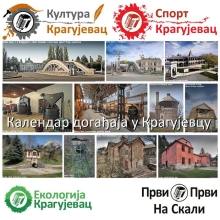

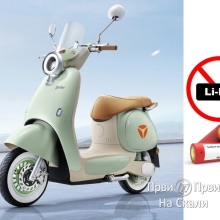
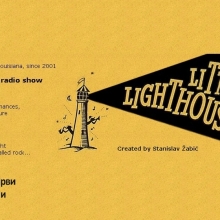
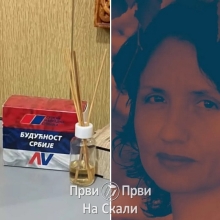

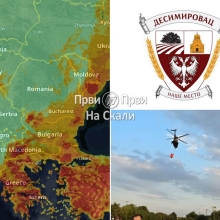

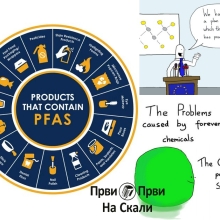


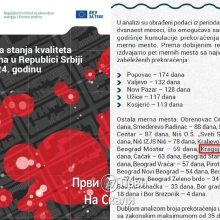
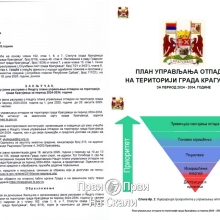
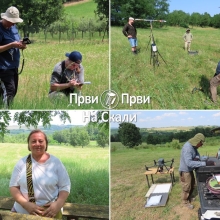
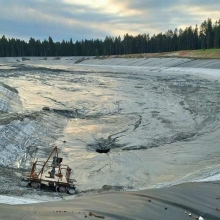
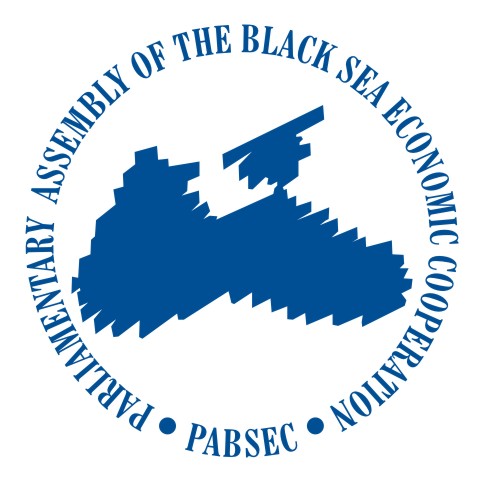









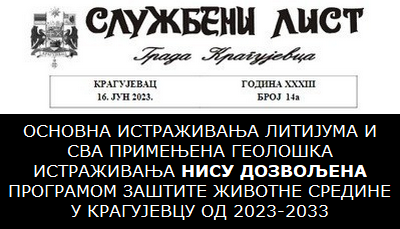
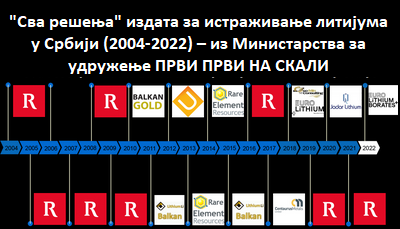
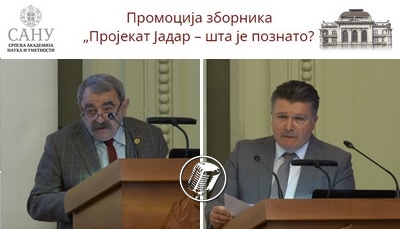
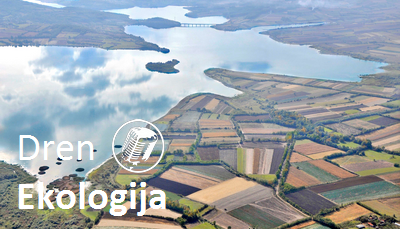




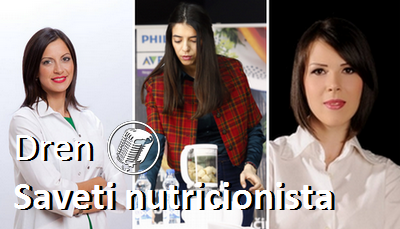
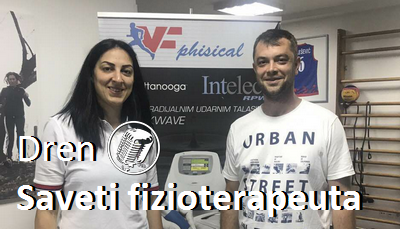
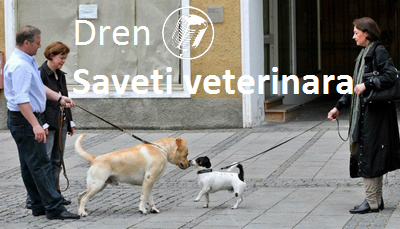

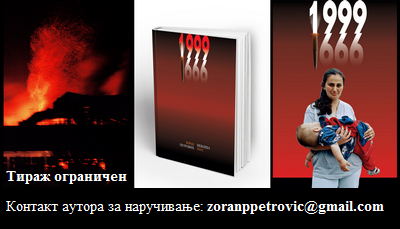

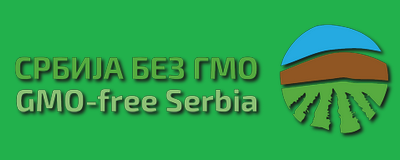
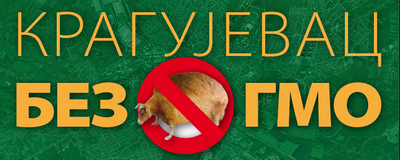



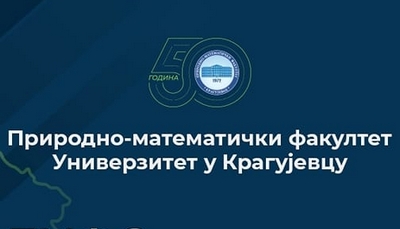
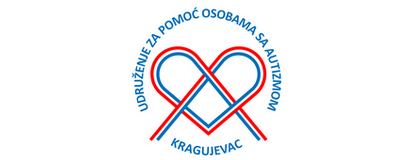

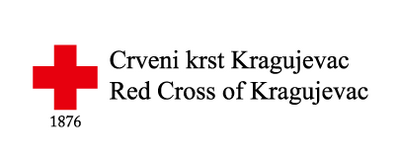

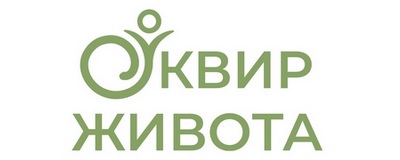

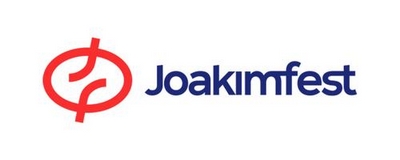
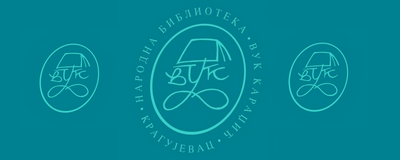

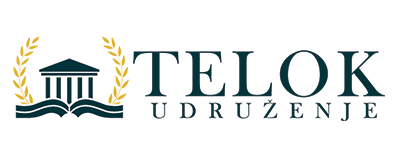

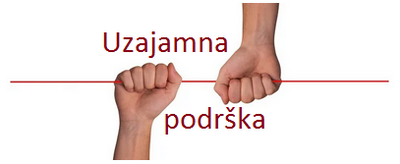










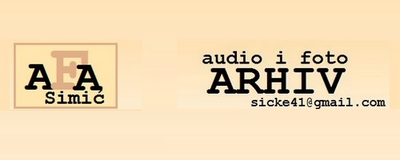




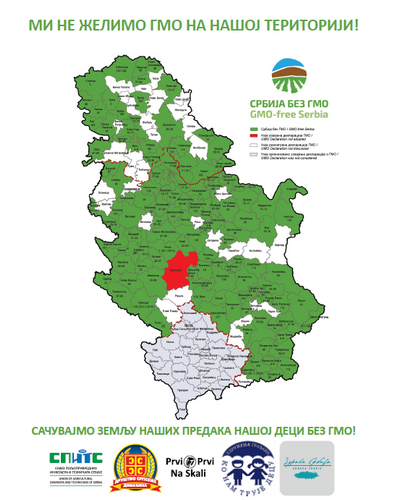


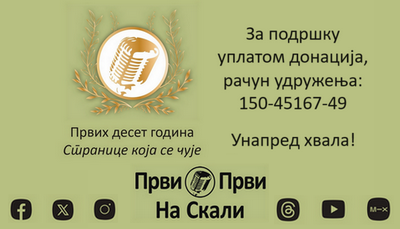
Komentara: 0